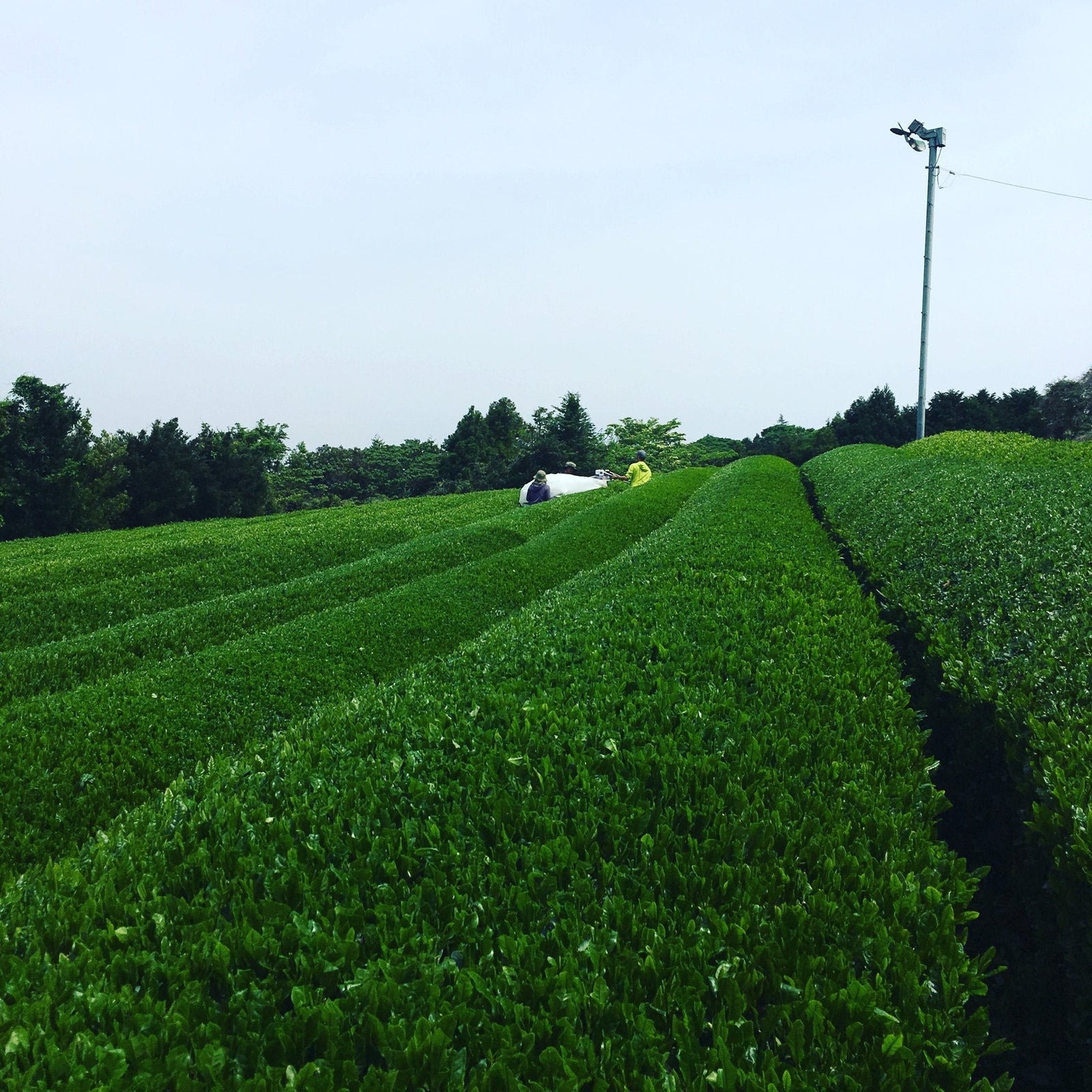皆様、遅めの夏至おめでとうございます!私たちと同じように、 新茶(つまり、今シーズン一番茶)を楽しんでいただけたら嬉しいです。
Yunomiでは、日本全国の茶の生産地域とそのサブリージョンをリストアップし、主要50地域を調査するという、刺激的で野心的なプロジェクトに着手しました。お茶の生産量上位2県である静岡県と鹿児島県は、日本の茶生産量の70%以上を占めていますが、日本の豊かな地理的多様性は、高品質で地域特有のお茶を生産する絶好の機会を提供しています。実際、大阪と最北端の北海道、そして山形県を除くすべての都道府県で商業的にお茶が生産されています。
茶生産地域指数
チャ( Camellia sinensis)は亜熱帯植物で、凍結には耐えられません。そのため、日本の茶生産地の大部分は最南端の島、九州に集中しています。議論の余地はありますが、商業的な茶生産の北限は新潟県村上市と茨城県大子町の間に引かれているようです。興味深いことに、茶の原料として利用されていないものの、北海道南部(最北端の島)にも茶樹が見られます。
さて、本題に戻りましょう。ある場所が主要な茶産地とみなされる基準は何でしょうか?生産量でしょうか、茶栽培面積でしょうか、生産量の価値でしょうか、それとも高級茶の生産量でしょうか?地理的な位置や環境特性(気候、土壌の種類、降雨量、昼夜の寒暖差など)に基づいて、多種多様な茶産地や茶の種類を分類することは可能でしょうか?また、特定の地域特有の歴史や伝統、そこで生産される茶の希少性、あるいはこれらの要因の組み合わせなども考慮に入れることができます。これは私たち自身も完全な答えを持っていない、進化し続ける問いです。
このプロセスは有意義なものになると信じており、この問いを探求することで、日本全国の高品質で特別なお茶の多様性に光を当てることができるでしょう。ほとんどのお茶愛好家は、煎茶、玉露、かぶせ茶といった主要な種類をよく知っていますが、宇治の玉露と八女の玉露を区別する地域のテロワール(土壌)を誰もが理解しているわけではありません。そこで、日本で最も有名なお茶の産地である県(鹿児島、静岡、京都、埼玉など)のいくつかを最初に取り上げ、これらの県で生産されているお茶の種類を議論し、特に高く評価されている種類のお茶が生産されている場所を紹介するブログ投稿シリーズを開始します。その過程で、いくつかの地域の特産品を取り上げて、環境と歴史がどのように本当に素晴らしいお茶とユニークな茶の伝統を生み出してきたかを考えていきます。
このブログシリーズの次回では、南から北へと旅しながら、主要なお茶の生産県と特定の地域をいくつか取り上げていきます。
- 鹿児島~大隅(志布志地域を含む)、薩摩半島、屋久島、種子島。
- 京都~木津川沿い(山城地域): 宇治、 宇治田原、 和束
- 三重 -飯安、亘理、四日市、鈴鹿、亀山
- 静岡- イアン・チュンさんが約1ヶ月前に「Japanese Tea Connoisseurs」のFacebookページでこの件について質問していました。沼津、富士、本山、清水、川根、牧之原、藤枝、菊川、掛川、東山、天竜など、それほど広範囲ではありませんが、静岡の茶産地として知られています。静岡でお気に入りの茶葉はありますか?
- 埼玉~入間・所沢・狭山
次に、すでに触れた都道府県を除いて、いくつかの地理的地域に焦点を当て、各地域の有名なお茶、歴史、ユニークな事実を紹介します。
注:茶産地名の後の括弧内は都道府県名です。
- 九州- 高千穂、五ヶ瀬(宮崎)、人吉球磨(熊本) 、 八女(福岡) 、 東彼杵(長崎)、嬉野(佐賀)
- 関西・毛虫(兵庫)、大和高原地域(奈良)
- 関東- 西尾(愛知)、美濃白川(岐阜)、佐島(茨城)
- 四国 -三豊(香川)、三好、上勝(徳島)、仁淀川、大豊(高知)
- その他の地域
何も決まっていないので、この冒険的なお茶の旅に一緒に乗り出すにあたり、皆様のご意見、ご質問、そしてご意見をいただければ幸いです。それでは次回、ボン・テ!
*Bon thé! は、bon appetit と同じように、おいしいお茶をお楽しみいただくための私個人のメッセージです。



2件のコメント
Hi Ken,
We’re happy to hear from you. I wonder if the tea you had in Gifu was a Shirakawa-cha, there is high quality and rare tea in that area.
Yes, my intention was to highlight teas from Gifu in the “Other areas” but perhaps, it can come soon!
Thank you for this project…..could we have some more information on teas from Gifu. When I was in Takayama,2018, I tasted some local Sencha which was quite good if not complex Arigatou gozaimas